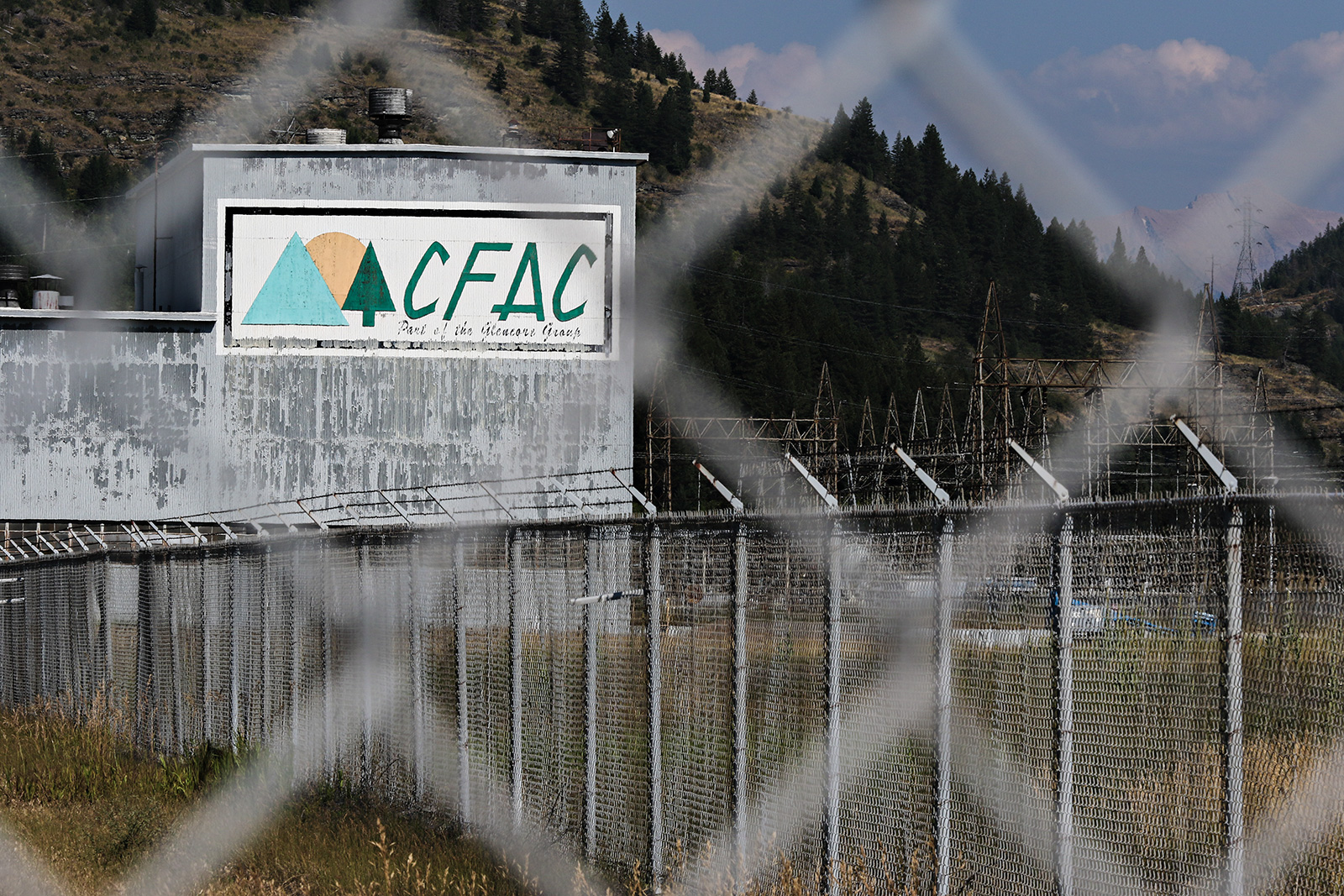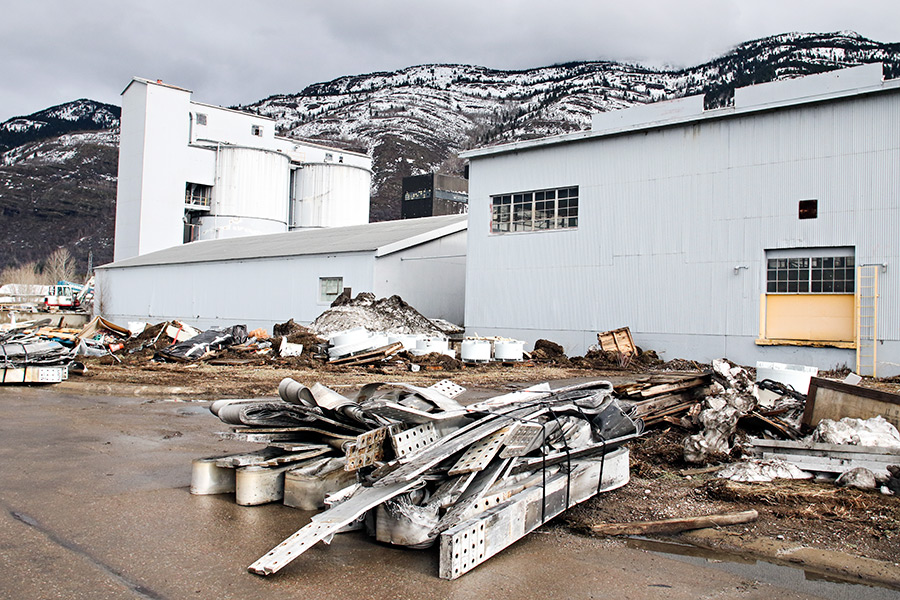Advocacy Group to EPA: Reconsider ‘Waste-in-place’ Cleanup Plan at CFAC Superfund Site
The Coalition for a Clean CFAC is asking the EPA and Montana DEQ to reevaluate its proposed remedy involving the off-site removal of hazardous waste from the former aluminum plant
By Tristan Scott
A pair of Flathead County citizen advocacy groups have formed a coalition in response to the proposed cleanup plan at the site of the former Columbia Falls Aluminum Company (CFAC) along the Flathead River, where federal regulators have proposed containing hazardous wastes as part of their final remediation rather than shipping the toxic materials off-site.
The newly formed Coalition for a Clean CFAC is requesting the U.S. Environmental Protection Agency (EPA) and the Montana Department of Environmental Quality (DEQ) “take a timeout to fairly re-evaluate the cost benefits of removing, not leaving, the toxic waste at CFAC,” which the EPA declared a Superfund site in 2016.
According to a press release announcing the formation of the new coalition, it represents two existing organizations, Citizens for a Better Flathead and the Columbia Falls-based Upper Flathead Neighborhood Association, as well as a “rapidly growing number of city and county residents throughout the Flathead including a number of former CFAC employees and other local organizations.”
“Our mission is to secure the comprehensive cleanup of the Columbia Falls Aluminum Company Superfund site for the health, enjoyment and economic benefit of the local community and the protection of the Flathead watershed.”
The organization is also launching a petition and outreach campaign to build support for a cost-benefit study, the release states, in order “to ensure that this 950-acre site can once again become the site of the robust and vital economic redevelopment for this region.”
In a Jan. 18 letter to Carolina Balliew, the EPA’s Montana Remedial Section C Supervisor in Region 8, and Chris Dorrington, director of the Montana Department of Environmental Quality (DEQ), the coalition formalized its request for a timeout.
“We request that EPA and Montana DEQ not go forward with a Record of Decision based on its proposed waste-in-place plan outlined in the 2021 Feasibility Study and the 2023 proposed cleanup plan for the Columbia Falls smelter site,” the letter states, adding that local authorities have not adopted a future land-use plan for the site, while the proposed plan limits the scope of future land uses and does not align with “the vision of a cleaned-up, economically revitalized property that the community so desires and deserves.”
“A waste-in-place solution fails to provide the assurances the community deserves that there will not be ongoing and worsening leaking of these toxic wastes to ground water and surface waters as the waste plume grows and moves,” according to the letter.
As the EPA works to finalize remediation of the CFAC site, trustees with the Montana Justice Department’s Natural Resource Damage Program recently took the first steps to assess and recover damages from the corporate entities responsible for the contamination, including CFAC, Glencore and the Atlantic Richfield Company (ARCO).
In this case, the Montana Natural Resource Damage Program, acting on behalf of Gov. Greg Gianforte, on Jan. 8 joined the Confederated Salish and Kootenai Tribes (CSKT) as well as two federal natural resource trustees, the U.S. Departments of Interior and Agriculture, to issue a notice of intent to perform a natural resource damage assessment at the CFAC site. Along with the notice of intent, the trustees also submitted a detailed 34-page pre-assessment screen.

According to the coalition, the state’s decision to initiate the damage assessment props up its concerns about shortcomings in the EPA’s proposed remediation plan.
“Our reservation regarding the proposed action calling for leaving toxic waste in place at the CFAC site is validated and heightened by the recent conclusion of the Montana Natural Resource Damage Program, acting on behalf of Gov. Greg Gianforte, who was joined by the Confederated Salish and Kootenai Tribes (CSKT) as well as two federal natural resource trustees, the U.S. Departments of Interior and Agriculture, to issue a notice of intent to perform a natural resource damage assessment at the CFAC site,” the letter states. “Most telling is the conclusion of their detailed 34-page pre-assessment screen which states regarding the proposed CFAC cleanup plan that, ‘EPA has issued a proposed plan for a final cleanup in 2023; the preferred alternative, however, will not return the Site to baseline. Rehabilitation, restoration, or replacement of natural resources is required to reduce future injuries and compensate the public for interim losses of natural resources and the services they provide.’ These findings are one more reason we believe a timeout is warranted to ensure more effective cleanup solutions are considered and adopted.”
The letter is signed by Mayre Flowers, a Flathead County resident and head of Citizens for a Better Flathead; Shirley Folkwein, a Columbia Falls resident and head of the Upper Flathead Neighborhood Association; Phil Matson, a Columbia Falls resident and longtime Flathead Lake Biological Station researcher; Peter Metcalf, a Columbia Falls resident and the director of the Glacier-Two Medicine Alliance; and Columbia Falls residents Nicole Bond, Becca Wheeler, Jim and Heather Peacock, Larry Williams, and Becky Williams.